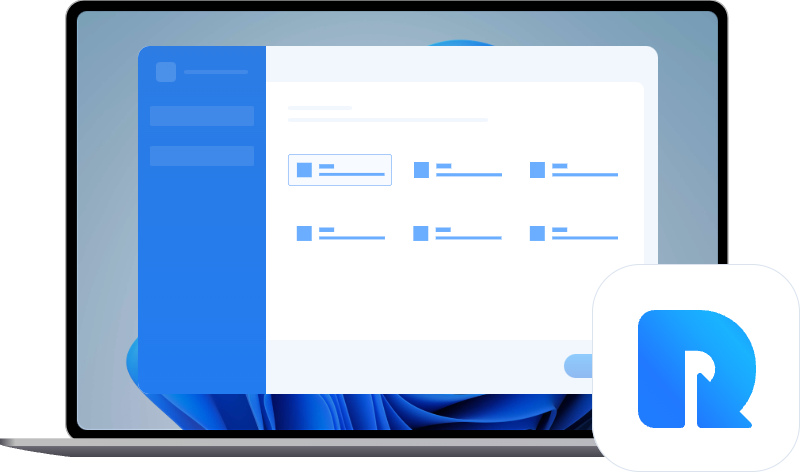How to Recover Data from Corrupted Windows OS [Easy Steps]
On this page, you can learn how to recover data from corrupted Windows OS with a powerful data recovery tool.
Your computer may encounter an abrupt crash, be it from hardware glitches, reliance on an outdated Windows iteration, or an unforeseen system malfunction. Amidst such an ordeal, the primary concern is recovering deleted files before any further deterioration sets in.
Attempting a solo resolution might cross your mind, but the majority of users lack the know-how to recover data from corrupted Windows OS. Unfortunately, such endeavors often exacerbate the system's condition rather than ameliorate it. Do not worry, we've got a solution tailored for you.
Why Does Windows OS Get Corrupted?
The corruption of Windows OS is an unexpected hindrance that bars access to your hard drive and data. Various underlying factors contribute to these issues, including:
- Malicious malware or virus infiltrations
- Corruption within the BIOS or Windows drive
- Conflicts among hardware components, drivers, or the Windows Registry
- Simultaneous operation of numerous software, consuming significant disk space
- Inadequate memory capacity
- Unstable power supply
- Corruption in the motherboard or primary storage
- Booting complications
This assortment of problems is just a part of the myriad issues capable of corrupting the Windows operating system. When a system experiences a crash, users find themselves locked out of their files. While this doesn't necessarily equate to data loss, it renders content inaccessible. To navigate this challenge and recover data from a corrupted Windows OS, a dedicated data recovery solution becomes imperative.
How to Recover Data from Corrupted Windows OS
How to recover data from corrupted Windows OS? Here we provide 2 methods for you.
Method 1. Recover Data from Corrupted Windows OS with MyRecover
Recovering data from a corrupted Windows OS might seem like a daunting task, especially when traditional access methods fail. However, a viable solution exists, and MyRecover is here to streamline the process.
MyRecover: Tailored for scenarios involving system crashes or startup complications, MyRecover excels in retrieving lost data amidst various booting issues, such as crashes, freezes, and persistent reboots. Notably, it demonstrates efficiency even in the recovery of data from a crashed hard drive.
Effortlessly fashioning a bootable disk for efficient data recovery becomes a reality with the user-friendly features of MyRecover. Follow these steps meticulously to ensure a hassle-free creation process:
Creating a Bootable Disk with MyRecover
Step 1: Download and Install MyRecover
Commence by downloading and installing MyRecover on your computer. Launch the application and navigate to the "Crashed PC Recovery" feature.
Step 2: Execute Bootable Disk Creation
Choose your preferred method for crafting the bootable disk and click "Execute" to kickstart the process.
Step 3: USB Flash Drive Formatting
Upon method selection, an information window will prompt you to format the USB flash drive. This action results in the loss of all data on the drive. If crucial data resides on the USB flash drive, perform a file backup before proceeding. Once prepared, click "Yes" to proceed.
Step 4: Creation Operation in Progress
The creation operation will commence, typically concluding within a few minutes.
Step 5: Confirmation of Successful Creation
Upon successful finalization, a confirmation message will grace your screen, validating the successful creation of the bootable disk.
With these steps, MyRecover ensures a smooth and efficient process in crafting a bootable disk, laying the foundation for successful data recovery from a corrupted Windows OS.
Booting from Your Bootable USB
Having successfully created a bootable USB flash drive or CD/DVD drive using MyRecover, proceed with the subsequent steps to recover data from a corrupted Windows OS.
1. Connect the Bootable Disk:
Plug the bootable USB flash drive into the corrupted computer.
2. Restart Your Computer and Access BIOS:
Restart the computer. You can access the BIOS by consistently pressing F2 or Delete during the startup process.
3. Modify Boot Order:
Within the BIOS settings, fine-tune the boot order to prioritize the "removable device" (the bootable USB disk) over the hard drive.
4. Save Changes and Exit:
Confirm the modifications by pressing "F10" and exit the BIOS. Your computer will now initiate the boot sequence from the designated removable device, seamlessly ushering in the data recovery process.
By adhering to these steps, you pave the way for a smooth and effective data recovery journey, leveraging the bootable USB created with MyRecover to access and retrieve data from corrupted Windows OS.
Recovering Data from Bootable Disk
How to recover data from corrupted OS? Effortlessly embark on the data recovery journey from your unbootable hard disk using MyRecover. Navigate through the following steps for a seamless retrieval process:
Step 1: Launch MyRecover
Open MyRecover and opt for "PC Recovery." Hover the mouse over the drive saved deleted files before, and click Scan.
Step 2: Deep Scan and Identify Data
MyRecover automatically conducts a comprehensive scan, meticulously identifying all recoverable data. Accelerate the location of specific data with the Search Box or the Filter feature.
Step 3: Select Files and Initiate Recovery
Review the scan results and cherry-pick the files for recovery. Facilitate data recovery from the SSD by choosing "Recover x files."
By adhering to these steps, MyRecover ensures a user-friendly and efficient process, allowing you to seamlessly recover data from your unbootable hard disk.
Method 2: Try System Restore
Regain access to your computer by employing System Restore, a method that loads only essential operating system features. Here is a tutorial to use it:
Step 1. Power up Your PC and Access Advanced Options:
Start your computer and simultaneously press the F8 key to launch the Advanced Options menu.
Step 2. Select System Restore:
Within the Advanced Options menu, choose the first option, namely, System Restore. This selection initiates a restoration process that grants you access to your system and data.
Step 3. Recover Your Data Using a Data Recovery Tool:
After successfully restoring your system, employ a reliable data recovery tool to retrieve your lost data. Ensure thorough recovery before moving forward.
How to Repair Corrupted Windows System
Here we list some fixes to repair corrupted Windows OS. You can try them to make Windows OS normal.
Solution 1. Try the CHKDSK Command
When a hard disk drive is damaged or corrupted, it can trigger system corruption. Follow these steps to inspect and rectify damaged hard disk drive issues using the CHKDSK command:
Step 1: Open Command Prompt
Press the "Windows" key and type cmd.
Step 2: Run as Administrator
Right-click "Command Prompt" and select "Run as administrator."
Step 3: Execute CHKDSK Command
Input the following command: chkdsk F: /f /r /x. (Replace "F" with the drive letter of the partition requiring repair.)
This command initiates a comprehensive scan and repair process for the specified drive, tackling corruption errors and restoring system stability.
Solution 2: Keep Device Drivers Up-to-Date
System corruptions, especially post-Windows 10 updates, can stem from hardware and driver incompatibility. Resolve this issue by ensuring all device drivers are up-to-date.
Step 1: Navigate to Device Manager
Go to "This PC" > "Manage" > "Device Manager."
Step 2: Expand "Disk Drives"
In Device Manager, locate and expand the "Disk Drives" section.
Step 3: Update Disk Drivers
Right-click the specific disk displaying potential issues and select "Update Driver."
This prompts the system to search for and install the latest driver updates, mitigating compatibility issues and reducing the likelihood of system corruption post-Windows 10 updates.
Final Words
In the realm of Windows Operating Systems, corruption can rear its head for various reasons, as expounded in the aforementioned article. Understanding these triggers becomes paramount in steering clear of potential data loss down the line.
Protect your data proactively by establishing automated backup routines and conducting routine virus scans.In this way, you can restore files from backup with ease.
MyRecover stands out with its professional features, simplifying the process of recovering data from corrupted Windows OS.


